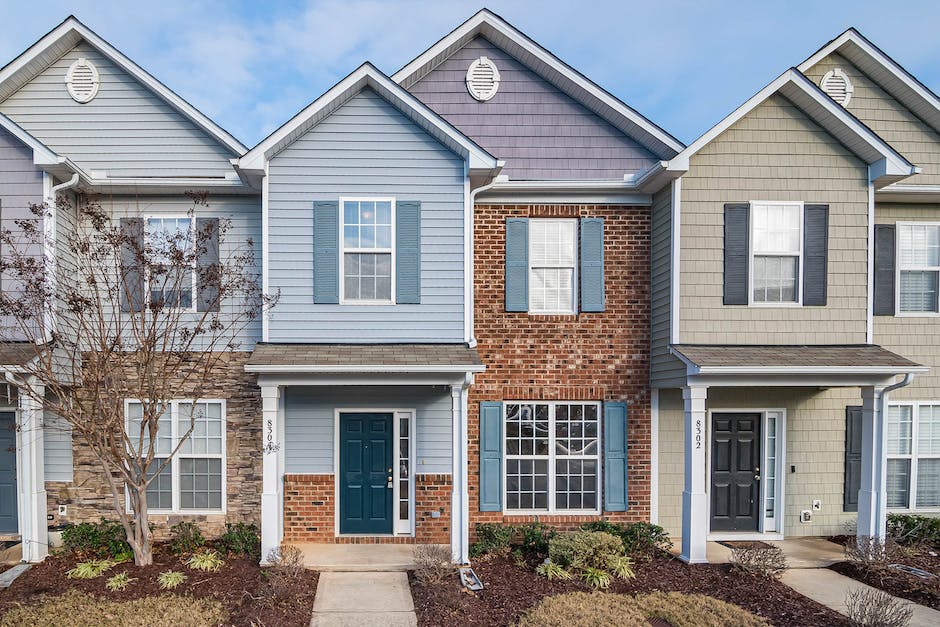Introduction to suburban living
Suburban living offers a peaceful and quiet environment away from the hustle and bustle of the city. It provides a sense of community and safety, making it an ideal place to raise a family. Access to spacious homes with yards and proximity to parks and recreational spaces also make suburban living appealing. In addition, suburban neighborhoods often have better schools and lower crime rates compared to urban areas.

Benefits of living in a suburban neighborhood
Living in a suburban neighborhood can offer a quieter and more peaceful atmosphere compared to city living. Suburbs generally have lower crime rates, which can provide a sense of security for residents. Additionally, suburban areas often have more green spaces and parks, making it a great environment for families with children or pets. The cost of living in suburban neighborhoods is often lower than in urban areas, providing more affordable housing options and a generally lower cost of living.
Peace and quiet in suburban neighborhoods
Living in a suburban neighborhood offers peace and quiet away from the hustle and bustle of the city. The environment is generally less noisy with fewer crowds, making it an ideal place for relaxation and tranquility.
Community and social life in suburban areas
Suburban neighborhoods offer a strong sense of community and social life. Neighbors often participate in local events and activities, creating a close-knit atmosphere. This environment allows for stronger social connections and a feeling of belonging, contributing to a better quality of life.
Outdoor spaces and recreation in suburbs
Living in a suburban neighborhood provides ample outdoor spaces and recreational opportunities. Suburbs often boast parks, playgrounds, and green spaces that are perfect for outdoor activities and relaxation. Residents can enjoy activities like biking, hiking, picnicking, and accessing sports fields and trails conveniently in their community. Additionally, many suburban neighborhoods offer community centers, pools, and fitness facilities for various recreational pursuits. These amenities contribute to a healthier and more active lifestyle for suburban residents.
Access to good schools in the suburbs
Families living in suburban neighborhoods often have access to high-quality schools, which can provide a more conducive learning environment for children. Research has shown that students in suburban schools tend to have better academic outcomes due to smaller class sizes, well-maintained facilities, and dedicated teachers. Additionally, the close-knit nature of suburban communities often fosters a strong sense of school spirit and parental involvement, which can further enhance the educational experience for children.
Lower cost of living in suburban areas
The cost of living in suburban areas is generally lower than in urban areas. This is because the price of housing, groceries, and other necessities is usually more affordable. Additionally, utilities and transportation expenses are often less expensive in suburban neighborhoods. Overall, living in a suburban area can lead to significant savings and a more budget-friendly lifestyle.
Safety and security in suburban neighborhoods
Safety and security in suburban neighborhoods offer a sense of peace and tranquility. According to the National Association of Realtors, suburban areas generally have lower crime rates compared to urban areas. This is due to the smaller population and close-knit community, which encourages neighborly vigilance. Additionally, the increased space between houses and the presence of local law enforcement contribute to a strong sense of safety in suburban neighborhoods.
Downsides to living in a suburban neighborhood
Living in a suburban neighborhood can have its drawbacks. Here are some downsides to consider:
- Limited access to amenities: Suburban areas may have limited access to restaurants, shops, and entertainment options, requiring residents to travel to urban areas for these activities.
- Dependence on cars: Suburban neighborhoods often lack efficient public transportation, making it necessary for residents to rely on their cars for commuting.
- Homogeneity: Suburban neighborhoods may lack diversity in terms of culture, socioeconomic status, and lifestyle, leading to a more homogeneous community.
- Commute times: Residents of suburban neighborhoods often face longer commute times to reach workplaces located in urban areas.
Conclusion: Is suburban living right for you?
So, is suburban living right for you? Well, living in a suburban neighborhood offers a peaceful and family-friendly environment, with less hustle and bustle compared to city living. You can enjoy larger homes with more space and a yard, and a stronger sense of community. Suburban areas also have lower crime rates, better schools, and a closer connection to nature. However, it may not be for everyone, especially if you prefer the excitement and convenience of city living. Ultimately, the decision comes down to your personal preferences and lifestyle.




